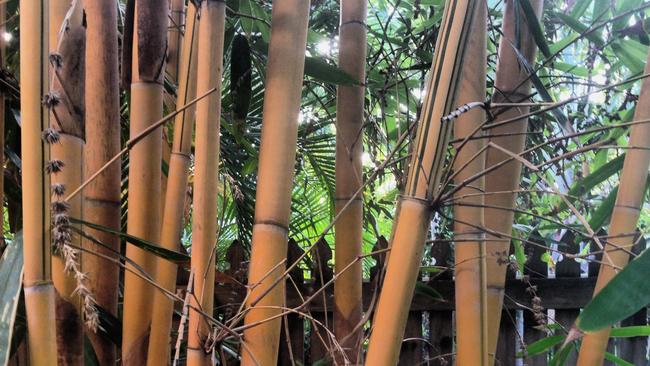How to grow bamboo, hibiscus, ferns and lemon trees
Your gardening problems solved. This week: bamboo, hibiscus, ferns and lemon trees.

I want to grow a 5m-tall bamboo privacy hedge in troughs that measure 100cm x 35cm x 35cm, in light shade. Which variety would you recommend? — John M, Sydney
Shallow and narrow troughs like those provide limited volume for the roots to occupy, meaning potential height and health is compromised in the longer term. Bamboo does not like to dry out, shedding leaves when water stressed. The toughest variety for you is common running bamboo (Phyllostachys aurea), which must never be planted outside a confined container. Slender weavers bamboo is a popular clumping variety.
My yellow hibiscus has plenty of buds, but all are full of beetles, despite weekly spraying with Confidor. The neighbours have no problem with their plants. — Keith Evans, by email
Hibiscus flower beetles are hard to kill. They’re attracted to pale and yellow blooms, making darker colours safer to grow. Dispose of fallen blooms daily to reduce insect numbers. Attract and trap them in a white or yellow container filled with soapy water, beneath the shrub. Clean and replace regularly. Confidor should treat hibiscus beetle if sprayed fortnightly on buds and flowers. Note: it is toxic to bees.
The Nephrolepis fern hanging in our bathroom has seemed happy but recently fronds are losing their colour and dropping leaves. I’ve found tiny white insects on fronds and soil. How do I treat them? — Anthony Browne, by email
They’re probably thrips, which typically cause silvering of leaves. Horticultural soaps such as Natrasoap and oils such as Eco-Oil treat them but require thorough coverage on both sides of fronds. Systemic MaxGuard works from inside the plant and has a long residual effect.
Our lemon tree gets stink bugs every year. They must be from Krypton as they’re indestructible. How can I kill them? — Brian Marsden, Brisbane.
Spray your tree thoroughly in midwinter with PestOil to kill vulnerable, green, nymph-stage bugs. Once they turn orange and then black, they are well armoured against most sprays. They drop when disturbed, so hold a bucket of hot or soapy water below and tap branches with a stick. Or try a second-hand vacuum cleaner with disposable bag. Wear glasses, as the evil-smelling fluid they eject is caustic. Spangled drongo birds love them.



